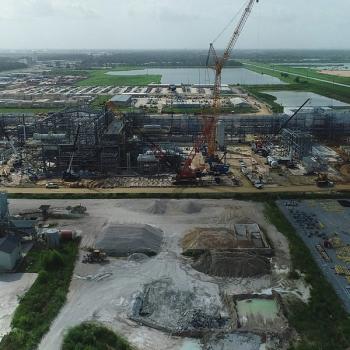
Electric power panel outlines challenges
John Shelk, president and CEO, Electric Power Supply Assn., was keynote speaker at the 13th annual Electric Power Conference and Exhibition in Rosemont, IL. He urged competitiveness and innovation in the power markets and cited reliability as one of the future challenges facing the industry. Maintaining a power surplus was the best way to ensure reliability, he said.
Environmental issues are also a challenge. What’s needed, he said, were analyses of the impact of U.S. EPA rules on the power industry.
Shelk urged power producers to work together and push for financial reform, citing commodity futures trading issues and the fact that companies were having difficulty finding sufficient capital for new plants.
Regarding renewables, he believed new resources would be integrated into the generation mix along with energy storage systems, and that there should be no Federal standards on renewables. “It should stay a state-level issue,” he said.
Federal cyber security laws were likely to pass in the near future, he said, and that would help ensure the physical security of plants.
He concluded that we would see more consolidation, and future fleets would be using all fuels – coal, gas, wind, hydro and solar, which was becoming increasingly more economic. “Electric power will always be the big shoulder of the economy,” he said.
Following Shelk, the Executive Roundtable, voiced their thoughts about the future. On the topic of shale gas, Doyle Beneby, president and CEO, CPS Energy (San Antonio, TX), said that gas would not be the future “queen of fuels,” but more the “rook or knight” because prices would rise if the EPA regulated hydrocracking. And, as more users switched to low-cost gas, the increased consumption would drive the price up. Still, lower gas prices have resulted in some power producers being more aggressive in retiring coal plants.
Robert Fisher, Senior VP Fossil Generation, TVA, stressed a diversified portfolio, balancing gas, nuclear and coal. He said TVA would hedge its bets, but that by 2020, 20% of its fleet would be made up of renewables. Fisher wasn’t ruling out nuclear, announcing that TVA is investing in small (100 MW) nuclear plants which can be built quickly and begin generating power to finance other small nuclear plants.
Beneby felt that big nukes (1,000 MW) would still be around but that the industry would have to give up something: California may have to shutter plants on the San Andreas’ fault; and plants that had problems, such as Three Mile Island, may have to close; and others up for new licenses might not get them. Design standards would be more rigorous for nuclear plants based on seismic activity. And if those standards were too robust, future nuclear prospects would be hurt.
Looking ahead, Beneby is interested in purchasing a combined cycle plant and has sent out RFPs for a 250MW solar plant. “Eventually, there will be a carbon penalty,” he said. “But for now a carbon tax is off the table.”
Commenting on plant closings, Fisher cautioned that we must be careful giving away any asset, especially now when new licenses were so difficult to come by.
The panel concluded with future concerns: Safety of the work force; cyber security; permitting; EPA regulations; and financing future investments.
Newsletter
Power your knowledge with the latest in turbine technology, engineering advances, and energy solutions—subscribe to Turbomachinery International today.




